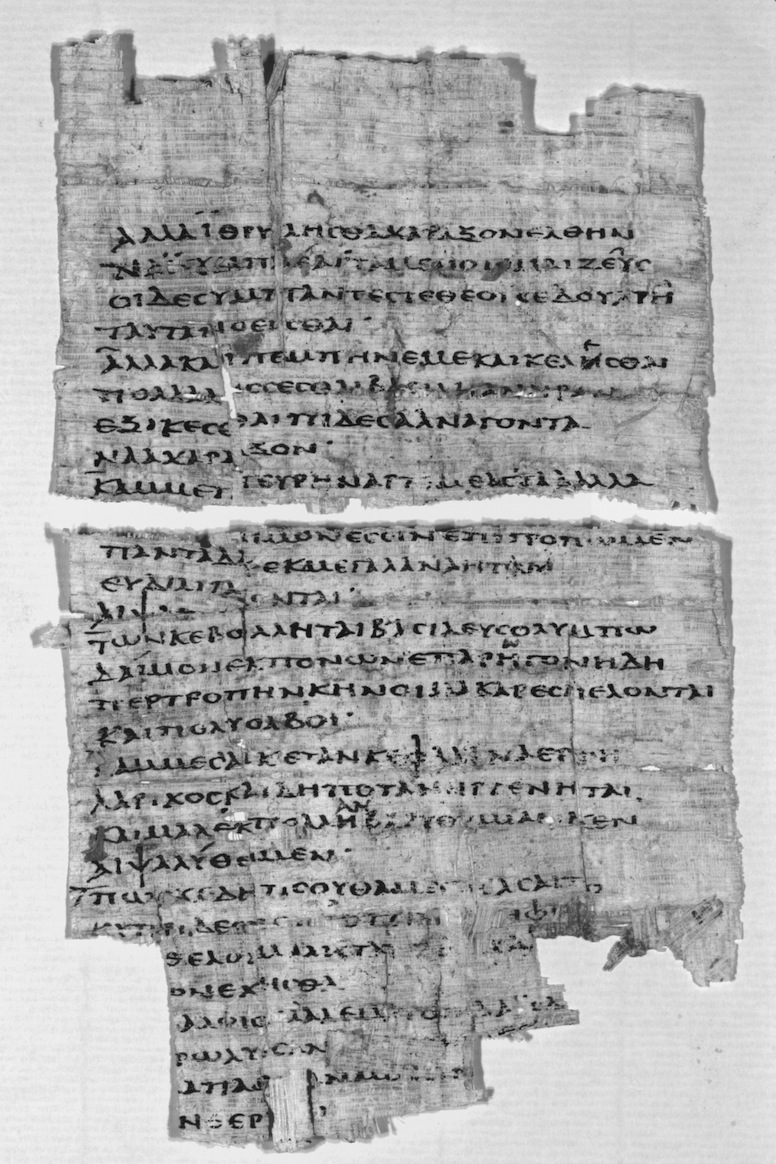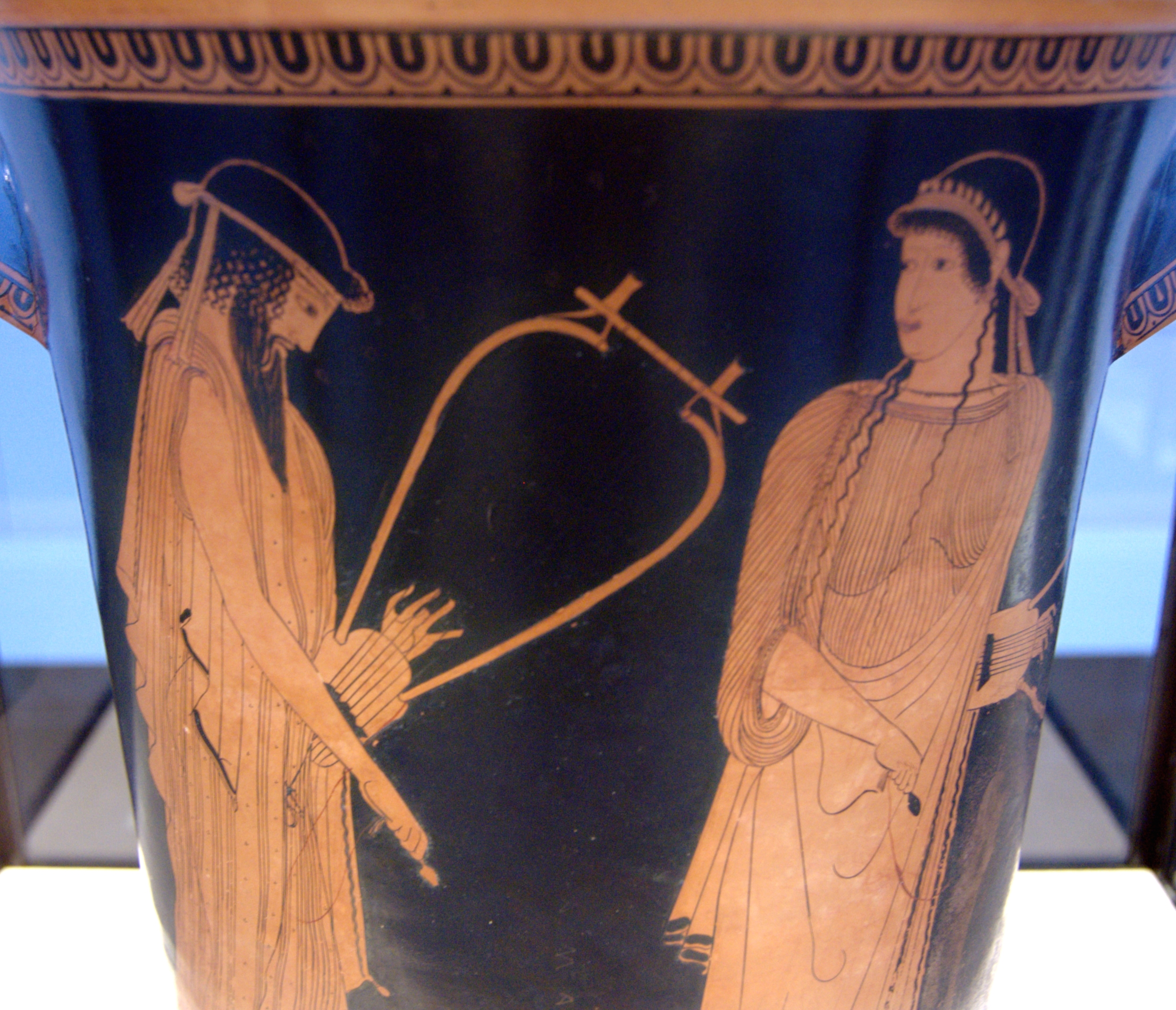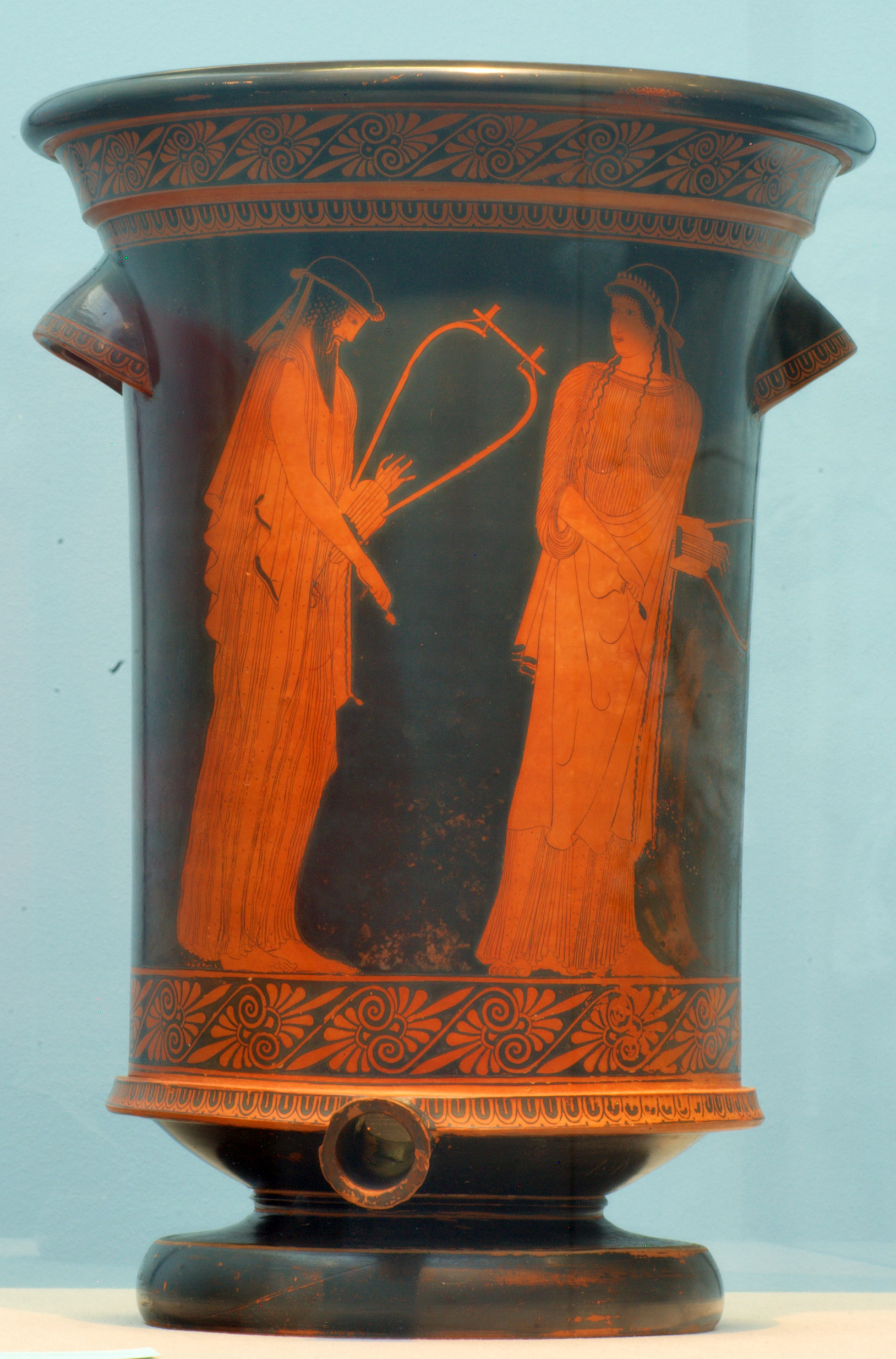|
Sappho
Sappho (; el, Σαπφώ ''Sapphō'' ; Aeolic Greek ''Psápphō''; c. 630 – c. 570 BC) was an Archaic Greek poet from Eresos or Mytilene on the island of Lesbos. Sappho is known for her lyric poetry, written to be sung while accompanied by music. In ancient times, Sappho was widely regarded as one of the greatest lyric poets and was given names such as the "Tenth Muse" and "The Poetess". Most of Sappho's poetry is now lost, and what is extant has mostly survived in fragmentary form; only the " Ode to Aphrodite" is certainly complete. As well as lyric poetry, ancient commentators claimed that Sappho wrote elegiac and iambic poetry. Three epigrams attributed to Sappho are extant, but these are actually Hellenistic imitations of Sappho's style. Little is known of Sappho's life. She was from a wealthy family from Lesbos, though her parents' names are uncertain. Ancient sources say that she had three brothers; Charaxos (Χάραξος), Larichos (Λάριχος) and Eurygios ... [...More Info...] [...Related Items...] OR: [Wikipedia] [Google] [Baidu] |
Brothers Poem
The Brothers Poem or Brothers Song is a series of lines of verse attributed to the archaic Greek poet Sappho ( – ), which had been lost since antiquity until being rediscovered in 2014. Most of its text, apart from its opening lines, survives. It is known only from a papyrus fragment, comprising one of a series of poems attributed to Sappho. It mentions two of her brothers, Charaxos and Larichos; the only known mention of their names in Sappho's writings, though they are known from other sources. These references, and aspects of the language and style, have been used to establish her authorship. The poem is structured as an address – possibly by Sappho herself – to an unknown person. The speaker chastises the addressee for saying repeatedly that Charaxos will return (possibly from a trading voyage), maintaining that his safety is in the hands of the gods and offering to pray to Hera for his return. The narrative then switches focus from Charaxos to Larichos, who the speake ... [...More Info...] [...Related Items...] OR: [Wikipedia] [Google] [Baidu] |
Poetry Of Sappho
Sappho was an ancient Greek lyric poet from the island of Lesbos. She wrote around 10,000 lines of poetry, only a small fraction of which survives. Only one poem is known to be complete; in some cases as little as a single word survives. Modern editions of Sappho's poetry are the product of centuries of scholarship, first compiling quotations from surviving ancient works, and from the late 19th century rediscovering her works preserved on fragments of ancient papyri and parchment. Along with the poems which can be attributed with confidence to Sappho, a small number of surviving fragments in her Aeolic dialect may be by either her or her contemporary Alcaeus. Modern editions of Sappho also collect ancient "testimonia" which discuss Sappho's life and works. Textual history Ancient editions Sappho probably wrote around 10,000 lines of poetry; today, only 650 survive. They were originally composed for performance, and it is unclear precisely when they were first written down ... [...More Info...] [...Related Items...] OR: [Wikipedia] [Google] [Baidu] |
Ode To Aphrodite
The Ode to Aphrodite (or Sappho fragment 1) is a lyric poem by the archaic Greek poet Sappho, who wrote in the late seventh and early sixth centuries BCE, in which the speaker calls on the help of Aphrodite in the pursuit of a beloved. The poem survives in almost complete form, with only two places of uncertainty in the text, preserved through a quotation from Dionysius of Halicarnassus' treatise ''On Composition'' and in fragmentary form in a scrap of papyrus discovered at Oxyrhynchus in Egypt. The Ode to Aphrodite comprises seven Sapphic stanzas. It begins with an invocation of the goddess Aphrodite, which is followed by a narrative section in which the speaker describes a previous occasion on which the goddess has helped her. The poem ends with an appeal to Aphrodite to once again come to the speaker's aid. The seriousness with which Sappho intended the poem is disputed, though at least parts of the work appear to be intentionally humorous. The poem makes use of Homeric langu ... [...More Info...] [...Related Items...] OR: [Wikipedia] [Google] [Baidu] |
Alcaeus Of Mytilene
Alcaeus of Mytilene (; grc, Ἀλκαῖος ὁ Μυτιληναῖος, ''Alkaios ho Mutilēnaios''; – BC) was a lyric poet from the Greek island of Lesbos who is credited with inventing the Alcaic stanza. He was included in the canonical list of nine lyric poets by the scholars of Hellenistic Alexandria. He was a contemporary of Sappho, with whom he may have exchanged poems. He was born into the aristocratic governing class of Mytilene, the main city of Lesbos, where he was involved in political disputes and feuds. Biography The broad outlines of the poet's life are well known. He was born into the aristocratic, warrior class that dominated Mytilene, the strongest city-state on the island of Lesbos and, by the end of the seventh century BC, the most influential of all the North Aegean Greek cities, with a strong navy and colonies securing its trade-routes in the Hellespont. The city had long been ruled by kings born to the Penthilid clan but, during the poet's life, th ... [...More Info...] [...Related Items...] OR: [Wikipedia] [Google] [Baidu] |
Lesbian
A lesbian is a homosexual woman.Zimmerman, p. 453. The word is also used for women in relation to their sexual identity or sexual behavior, regardless of sexual orientation, or as an adjective to characterize or associate nouns with female homosexuality or same-sex attraction. The concept of "lesbian" to differentiate women with a shared sexual orientation evolved in the 20th century. Throughout history, women have not had the same freedom or independence as men to pursue homosexual relationships, but neither have they met the same harsh punishment as homosexual men in some societies. Instead, lesbian relationships have often been regarded as harmless, unless a participant attempts to assert privileges traditionally enjoyed by men. As a result, little in history was documented to give an accurate description of how female homosexuality was expressed. When early sexologists in the late 19th century began to categorize and describe homosexual behavior, hampered by a lack of ... [...More Info...] [...Related Items...] OR: [Wikipedia] [Google] [Baidu] |
Mytilene
Mytilene (; el, Μυτιλήνη, Mytilíni ; tr, Midilli) is the capital of the Greek island of Lesbos, and its port. It is also the capital and administrative center of the North Aegean Region, and hosts the headquarters of the University of the Aegean. It was founded in the 11th century BC. Mytilene is one of the two municipalities on the island of Lesbos, created in 2019; the other is West Lesbos. Mytilene is built on the southeast edge of the island. It is the seat of a metropolitan bishop of the Eastern Orthodox Church. History As an ancient city, lying off the east coast, Mytilene was initially confined to a small island just offshore that later was joined to Lesbos, creating a north and south harbor. The early harbors of Mytilene were linked during ancient times by a channel 700 m long and 30 m wide. The Roman writer Longus speaks of white stone bridges linking the two sides. The Greek word εὔριπος ''eúripos'' is a commonly-used term when referring to a s ... [...More Info...] [...Related Items...] OR: [Wikipedia] [Google] [Baidu] |
Lesbos
Lesbos or Lesvos ( el, Λέσβος, Lésvos ) is a Greek island located in the northeastern Aegean Sea. It has an area of with approximately of coastline, making it the third largest island in Greece. It is separated from Asia Minor by the narrow Mytilini Strait. On the southeastern coast lies the island's capital and largest city, Mytilene, whose name is also used as a moniker for the island. The regional unit of Lesbos, with the seat in Mytilene, comprises the islands of Lesbos, Chios, Ikaria, Lemnos, and Samos. Mytilene is also the capital of the larger North Aegean region. The population of the island is 83,068, a third of whom live in the capital, while the remainder is distributed in small towns and villages. The largest are Plomari, Kalloni, the Gera Villages, Agiassos, Eresos, and Molyvos (the ancient Mythimna). According to later Greek writers, Mytilene was founded in the 11th century BC by the family Penthilidae, who arrived from Thessaly and ruled the city-sta ... [...More Info...] [...Related Items...] OR: [Wikipedia] [Google] [Baidu] |
Aeolic Greek
In linguistics, Aeolic Greek (), also known as Aeolian (), Lesbian or Lesbic dialect, is the set of dialects of Ancient Greek spoken mainly in Boeotia; in Thessaly; in the Aegean island of Lesbos; and in the Greek colonies of Aeolis in Anatolia and adjoining islands. The Aeolic dialect shows many archaisms in comparison to the other Ancient Greek dialects ( Arcadocypriot, Attic, Ionic, and Doric varieties), as well as many innovations. Aeolic Greek is widely known as the language of Sappho and of Alcaeus of Mytilene. Aeolic poetry, which is exemplified in the works of Sappho, mostly uses four classical meters known as the Aeolics: Glyconic (the most basic form of Aeolic line), hendecasyllabic verse, Sapphic stanza, and Alcaic stanza (the latter two are respectively named for Sappho and Alcaeus). In Plato's ''Protagoras'', Prodicus labelled the Aeolic dialect of Pittacus of Mytilene as " barbarian" (''barbaros''), because of its difference from the Attic literary style: ... [...More Info...] [...Related Items...] OR: [Wikipedia] [Google] [Baidu] |
Eva-Maria Voigt
Eva-Maria Voigt (, born Eva-Maria Hamm) was a German classical philologist, known for her work on the archaic Greek poets Sappho Sappho (; el, Σαπφώ ''Sapphō'' ; Aeolic Greek ''Psápphō''; c. 630 – c. 570 BC) was an Archaic Greek poet from Eresos or Mytilene on the island of Lesbos. Sappho is known for her lyric poetry, written to be sung while accompanied ... and Alcaeus. Life She studied Classical Philology at the University of Hamburg, and received her doctorate in 1945 with a dissertation ''"Zur Nominal- und Verbalflexion bei Sappho und Alkaios"''. From 1955 to 1984, she worked as editor of the ''Lexicon of the Early Greek Epic'', completed in 2010. In 1971, Voigt published ''Sappho et Alcaeus: Fragmenta''. She was a professor of classical philology at the University of Hamburg. She retired in April 1983, to Waldkirch. Works * ''Fragmente von Sappho und Alkaios'', Amsterdam, Athenaeum-Polak & Van Gennep, 1971. * ''Grammatik zu Sappho und Alkaios'' ... [...More Info...] [...Related Items...] OR: [Wikipedia] [Google] [Baidu] |
Greek Lyric
Greek lyric is the body of lyric poetry written in dialects of Ancient Greek. It is primarily associated with the early 7th to the early 5th centuries BC, sometimes called the "Lyric Age of Greece", but continued to be written into the Hellenistic and Imperial periods. Background Lyric is one of three broad categories of poetry in classical antiquity, along with drama and epic, according to the scheme of the "natural forms of poetry" developed by Goethe in the early nineteenth century. (Drama is considered a form of poetry here because both tragedy and comedy were written in verse in ancient Greece.) Culturally, Greek lyric is the product of the political, social and intellectual milieu of the Greek '' polis'' ("city-state"). Much of Greek lyric is occasional poetry, composed for public or private performance by a soloist or chorus to mark particular occasions. The symposium ("drinking party") was one setting in which lyric poems were performed.Miller, ''Greek Lyric: An ... [...More Info...] [...Related Items...] OR: [Wikipedia] [Google] [Baidu] |
Eresos
Eresos (; el, Ερεσός; grc, Ἔρεσος) and its twin beach village Skala Eresou are located in the southwest part of the Greek island of Lesbos. They are villages visited by considerable numbers of tourists. From 1999 until 2010, Eresos and the village of Antissa constituted the municipality of Eresos-Antissa. From 2010 until 2019, Eresos was part of the municipality of Lesvos and from 2019 it is part of the municipality of West Lesvos. Geography The municipal unit of Eresos–Antissa contains five other villages: Messotopos, Vatoussa, Chidira, Sigri and Pterounda located in the west and most barren part of the island. Bare rocky hills, derived from ancient volcanic activity, dominate the area. Skala Eresou is a centre for international tourism and is a favorite spot of Greek families, young people as well as gay women. With its long beautiful beach with dark volcanic sand and its crystal-clear unpolluted water, Skala Eressou was awarded Blue Flag status by the ... [...More Info...] [...Related Items...] OR: [Wikipedia] [Google] [Baidu] |
Papyrus Oxyrhynchus 1800
Papyrus Oxyrhynchus 1800 (P. Oxy. 1800; FGrHist 1139) is a piece of a papyrus roll containing biographies of various mythical and historical figures from ancient Greece. The papyrus was discovered in 1905–06 as part of a large group of literary papyri. 31 fragments from the roll were published in the '' editio princeps''; four further published fragments have since been identified as part of the same work. It is dated by the handwriting to the late second century AD. Biographies of Sappho, Simonides, Aesop, Thucydides, Demosthenes, Aeschines, Thrasybulus, Hyperides, Leucocomas, and Abderus are identifiable; other fragments of the papyrus may be from lives of Alcaeus and Lysias. It is unclear why these biographies were grouped together. The arrangement is equally uncertain – while it makes sense for Sappho and Simonides, two lyric poets whose names begin with the same letter, to be grouped together, it is less clear why the Athenian logographer Hyperides should come ... [...More Info...] [...Related Items...] OR: [Wikipedia] [Google] [Baidu] |







